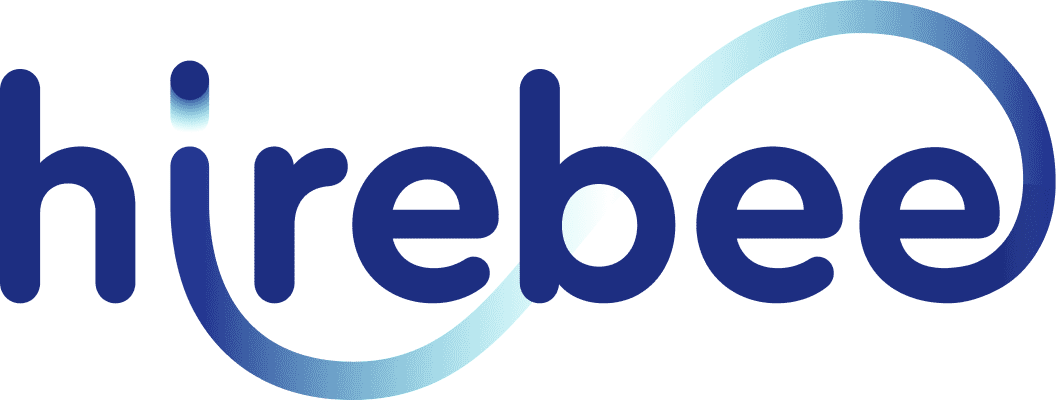The demand for staffing agencies is on the rise as businesses increasingly rely on specialized recruitment services to find top talent. Whether you’re an entrepreneur looking to enter the recruitment industry or an HR professional considering starting a staffing agency, this guide will walk you through the essential steps to launch and grow your business successfully.
Starting a staffing agency can be lucrative, given the growing need for skilled workers across various industries. Companies prefer outsourcing their hiring process to staffing firms to save time, reduce recruitment costs, and access a broader talent pool. You can establish a profitable staffing company with the right business model, understanding of recruitment industry trends, and a solid staffing agency business plan.
This guide will cover everything from legal requirements for staffing agencies to marketing strategies, funding options, and technology solutions like HR recruitment software. Whether you’re wondering how to start a staffing agency with no money or how to start a recruitment company with a significant investment, this step-by-step guide will provide you with all the information you need to succeed in the staffing industry.

Table of Contents
ToggleWhat Is a Staffing Agency?
A staffing agency is a business that connects employers with job seekers, helping companies fill positions with qualified candidates while providing job seekers with employment opportunities. These agencies act as intermediaries in the job market, streamlining the hiring process for businesses and ensuring that job seekers find roles suited to their skills and experience.
Staffing agencies operate in various ways, depending on the type of services they offer. The primary staffing business model can fall into one of the following categories:
- Temporary Staffing: Provides short-term employees to businesses that need extra help during peak seasons or for specific projects.
- Permanent Placement: Focuses on finding full-time employees for companies, often charging a one-time recruitment fee.
- Executive Search: Specializes in recruiting top-level executives and professionals for high-profile positions.
- Contract Staffing: Offers employees on a contract basis, often for long-term projects or specialized roles.
Choosing the right staffing model depends on your expertise, target industry, and available resources. Understanding recruitment industry trends can help you determine the best approach for your business. Selecting the right model is a crucial first step in building a successful staffing business.

Why Opening a Staffing Agency Is a Good Business Idea?
The staffing industry is a lucrative and rapidly growing sector, making it an attractive business opportunity for entrepreneurs. With companies constantly seeking qualified talent and job seekers looking for the right opportunities, a well-run staffing agency can bridge the gap between employers and employees while generating consistent revenue.
- High Demand for Recruitment Services: Businesses of all sizes rely on staffing agencies to find qualified candidates quickly and efficiently. Industries like healthcare, IT, construction, and finance experience ongoing labor shortages, increasing the need for staffing solutions. Companies prefer outsourcing recruitment to save time, reduce hiring costs, and access a broader talent pool.
- Flexibility in Business Models: Staffing agencies can tailor their services based on market demand by offering temporary, permanent, contract, or executive search solutions. Entrepreneurs can operate remotely, set up a niche agency, or build a large-scale firm based on their goals and resources. A staffing business can specialize in a particular industry or provide general recruitment services, allowing for scalability and adaptability.
- Profitability and Long-Term Growth Potential: The staffing industry generates billions in revenue annually, with many agencies achieving high-profit margins. Agencies can earn through placement fees, recurring contracts, and long-term client partnerships. As businesses continue to prioritize workforce flexibility, the demand for staffing agencies is expected to grow, ensuring long-term sustainability.
- Opportunity to Make an Impact: Staffing agencies help businesses find top talent while providing job seekers with valuable employment opportunities. They contribute to economic growth by reducing unemployment and connecting professionals with the right career paths. Agencies can improve hiring efficiency and diversity in workplaces by implementing modern recruitment strategies and technology.

Step-by-Step Process for Launching a Successful Staffing Agency
With the help of a step-by-step process, launching a successful staffing agency will be easier.
Step 1 – Creating a Staffing Agency Business Plan
A well-structured business plan is the foundation of a successful staffing agency. It not only serves as a roadmap for your operations but also helps attract investors and secure funding. Key components of a staffing agency business plan are:
- Market Research: Analyze the demand for staffing services in your target industry and location. Identify competitors and assess their strengths and weaknesses.
- Financial Projections: Outline startup costs, revenue streams, pricing strategies, and profitability forecasts.
- Service Offerings: Define whether you’ll provide temporary, permanent, or contract staffing solutions, and highlight any specialized industries you will serve.
- Defining a Niche for Competitive Advantage: Specializing in a specific sector (e.g., healthcare, IT, or finance) can help differentiate your agency and attract a dedicated client base.
Step 2 – Understanding Legal Requirements
Compliance with legal and industry regulations is crucial for running a legitimate and trustworthy staffing agency. Key legal requirements include:
- Business Registration, Permits, and Licensing Essentials: Register your business with local and state authorities and obtain the necessary permits.
- Labor Laws, Tax Regulations, and Industry Standards: Ensure compliance with employment laws, minimum wage requirements, workers’ compensation, and tax obligations.
- Drafting Contracts for Clients and Job Seekers: Develop clear and legally sound agreements outlining payment terms, job responsibilities, and compliance policies to protect all parties involved.
Step 3 – Calculating the Costs of Starting a Staffing Business
Understanding financial requirements and funding options will help you launch and sustain your agency. Key investment areas are:
- Office Space and Equipment: Costs for rent, utilities, and furniture, unless operating remotely.
- Technology and Software: Recruitment software, applicant tracking systems (ATS), and payroll processing tools.
- Branding and Marketing: Website development, advertising, and networking events.
Funding options are:
- Bootstrapping: Using personal savings or reinvesting early profits.
- Business Loans: Applying for small business loans from banks or financial institutions.
- Investor Backing: Seeking funding from angel investors or venture capital firms.
Step 4 – Choosing the Right Business Model
Choosing the right business model will determine how you generate revenue and structure client relationships. Common staffing models include:
- Temporary Staffing: Provides short-term employees to businesses that need extra support for seasonal demand, special projects, or temporary vacancies. This model ensures workforce flexibility for clients and a steady stream of job opportunities for candidates.
- Permanent Staffing: Focuses on filling full-time positions for clients, often involving a one-time placement fee based on the candidate’s annual salary. This model requires thorough candidate screening and long-term relationship building.
Contingency and Retained Recruitment approaches are:
- Contingency Recruitment: You only get paid when a candidate is successfully placed. This model is highly competitive and works well for mid-level positions where multiple agencies may be sourcing candidates.
- Retained Search: Clients pay an upfront fee to engage your agency exclusively in filling a position. This approach is more consultative, often used for executive or hard-to-fill roles, and allows for a deeper focus on quality placements.

Step 5 – Setting Up Essential Tools and Technology
Technology plays a vital role in streamlining recruitment, boosting efficiency, and enhancing the hiring process with the right candidate experience tools. Key solutions for staffing agencies include:
- Recruitment Software and Applicant Tracking Systems (ATS): These platforms help manage job postings, candidate applications, and interview scheduling.
- Top Staffing Technology for Emerging Agencies: Hirebee, Bullhorn, Zoho Recruit, and other AI-driven recruitment tools can automate hiring tasks and improve efficiency.
Step 6 – Building a Strong Talent Pool
A strong talent pool is essential for meeting client demands and filling positions quickly. Strategies for sourcing top candidates:
- Effective Sourcing and Networking: Utilize job boards, social media platforms, and industry events to connect with job seekers.
- Leveraging AI and Automation: Use AI-powered resume screening, chatbots, and automated interview scheduling to optimize the hiring process.
Step 7 – Developing a Marketing and Branding Strategy
Attracting clients and candidates requires a strategic marketing plan that enhances your agency’s credibility. Proven marketing strategies:
- Client Attraction and Credibility Building: Develop a compelling value proposition and showcase success stories.
- Digital Marketing Tactics: Use SEO, PPC advertising, and content marketing to drive online visibility.
- Social Media Outreach: Engage with audiences on LinkedIn, Facebook, and Instagram to build brand awareness and generate leads.
Step 8 – Managing Client Relationships and Operations
Sustaining long-term success requires excellent client relationships and operational efficiency. Best practices for client and business management:
- Client Onboarding and Retention: Establish transparent communication, provide quality candidates, and offer exceptional customer service.
- Pricing Strategies and Profit Maximization: Set competitive rates, consider volume-based discounts, and optimize your fee structures for higher margins.
By following these steps, you can build a profitable staffing agency that meets industry needs, delivers top talent to clients, and thrives in a competitive market. Ready to launch your business? Start today and turn your vision into reality!
How Much Does It Cost to Start a Staffing Agency?
Starting a staffing agency requires a cost that can vary depending on whether you are running a remote staffing agency or setting up a physical office. Below is a breakdown of the typical expenses involved.
Breakdown of Startup Costs
The startup costs for a staffing agency can be categorized into the following areas:
- Office Space & Utilities – If you choose to operate from a physical location, renting an office space and covering utility expenses will be a major cost factor. A fully remote agency can reduce these costs significantly.
- Technology & Recruitment Software – Investing in an Applicant Tracking System (ATS) and other recruitment software solutions is essential for efficient operations. Costs may include cloud-based platforms, CRM tools, and website development.
- Hiring & Payroll – If you need a team, consider salaries, benefits, and onboarding costs. Many new staffing agencies start solo and expand as they grow.
- Marketing & Branding – Building an online presence through a website, SEO, and digital ads requires a marketing budget. Business cards, logo design, and promotional materials also contribute to the initial expenses.
- Legal & Compliance Costs – Business registration, obtaining staffing licenses, and setting up contracts require legal support. Consulting with a lawyer is advisable to ensure compliance with labor laws.

Funding Options for Staffing Businesses
Securing funding is a crucial step in launching your staffing agency. Here are some of the most common financing options:
1. Bootstrapping vs. Investors
- Bootstrapping – Using personal savings or reinvesting initial revenue into the business can provide financial independence, but it may limit growth speed.
- Investors – Seeking private investors or venture capital firms can provide larger funding, but may require giving up equity in your business.
2. Government Grants & Small Business Loans
- Small Business Loans – Banks and online lenders offer business loans tailored for startups. Research loan options with favorable interest rates and repayment terms.
- Government Grants – Some governments offer grants or funding assistance for businesses, particularly in high-demand employment sectors. Check local programs available for new staffing agencies.
How to Choose the Right Recruitment Software?
Selecting the best recruitment automation software is crucial for streamlining operations, improving efficiency, and providing a seamless hiring experience for both clients and candidates. The right staffing software can help with candidate sourcing, applicant tracking, resume parsing, and workflow automation. Here’s what to consider when choosing a solution for your staffing agency.
When evaluating solutions, consider the following essential features:
- Applicant Tracking System (ATS) – Enables efficient tracking of candidates throughout the hiring process.
- Resume Parsing & Candidate Matching – Automates the extraction of candidate information and matches them to job requirements.
- Job Posting & Multi-Channel Distribution – Allows seamless job postings across multiple job boards and social media platforms.
- CRM & Client Management Tools – Helps manage relationships with employers and maintain a database of job orders.
- AI & Automation Features – Enhances candidate screening through AI-driven assessments and chatbots.
- Customizable Workflows – Adapts to different staffing business models, such as temporary staffing, contract hiring, or permanent placements.
- Compliance & Reporting Tools – Ensures adherence to labor laws and provides real-time analytics for better decision-making.
Here are some of the best recruitment software for staffing agencies:
- Hirebee – AI-driven recruitment platform offering job distribution, candidate sourcing, and automated applicant tracking. It helps staffing agencies streamline hiring with smart matching, workflow automation, and real-time analytics.
- Bullhorn – A comprehensive ATS & CRM designed for staffing firms, offering automation and reporting tools.
- Workable – AI-powered recruitment software that simplifies sourcing, applicant tracking, and onboarding.
- Zoho Recruit – Ideal for small and mid-sized agencies, featuring AI-driven resume screening and client management.
- Manatal – Cloud-based recruitment solution with candidate sourcing, AI recommendations, and pipeline management.
- JazzHR – User-friendly ATS software focused on collaboration, job posting, and resume parsing.
Scaling and Growing Your Staffing Business
Once your staffing agency is up and running, the next step is to focus on growth and scalability. Expanding your reach, improving operational efficiency, and building a strong team will help you stay competitive in the staffing industry.
Expanding Your Client Base
Growing your client network is essential for scaling your staffing agency. Here are some effective strategies:
- Networking & Industry Partnerships – Build relationships with businesses, HR professionals, and industry influencers to generate staffing contracts.
- Leveraging Online Job Boards & Career Fairs – Partner with major job platforms and participate in career expos to connect with employers and job seekers.
- Referral Programs & Cold Outreach – Encourage referrals from satisfied clients and job seekers while using targeted outreach strategies to attract new businesses.
Hiring and Training Internal Recruiters
A successful staffing agency depends on the quality and expertise of its internal recruitment team. Focus on:
- Building a Strong Recruitment Team – Hire skilled recruiters, account managers, and talent acquisition specialists to handle growing demands.
- Training & Development – Provide ongoing recruitment training, including interview techniques, compliance knowledge, and software proficiency.
- Employee Retention Strategies – Invest in team engagement, offer incentives, and create a positive workplace culture to reduce recruiter turnover.
Tracking Key Performance Metrics
Measuring and analyzing key metrics helps optimize staffing operations and improve business performance. Essential KPIs include:
- Client & Candidate Satisfaction – Monitor feedback from businesses and job seekers to enhance service quality.
- Time-to-Fill & Placement Rate – Track how quickly positions are filled and the success rate of placements.
- Revenue Growth & Profit Margins – Analyze financial metrics to ensure long-term scalability and profitability.
- Recruitment Funnel Conversion Rates – Assess how many candidates move through the hiring process successfully.
- Use of Analytics & AI – Leverage recruitment software analytics to improve decision-making and workflow efficiency.

Last Thoughts
Starting and running a staffing business can be both exciting and demanding. This guide has covered the key steps, from laying the groundwork and handling legal aspects to using technology and expanding operations.
For those willing to plan strategically, adopt the right tools, and build strong professional relationships, there are plenty of opportunities in this field. By selecting a suitable approach, streamlining processes, and staying responsive to industry changes, you can create a thriving and lasting business.
If you’re ready to move forward, begin by identifying your focus, setting up efficient workflows, and prioritizing the needs of both employers and job seekers. With the right mindset and preparation, success is within reach.









